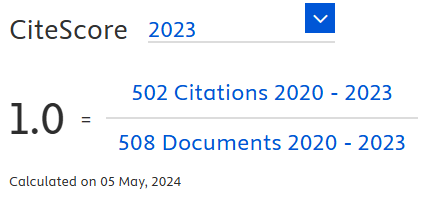Optimizing the Mg, Mn, and Mo co-inoculation impacts in soil using a response surface technique approach to ameliorate the N fixation efficiency of Enterobacter sp. GG1
DOI:
https://doi.org/10.18006/2025.13(2).265.271Keywords:
N-fixation, Nitrogenase enzyme, Ammonium, Response surface methodology (RSM), Central composite design (CCD)Abstract
Nitrogen fertilizers play a crucial role in enhancing crop productivity. However, the extensive use of synthetic fertilizers in recent years can disrupt the balance of soil nutrients, leading to deficiencies or toxicities in other essential nutrients such as magnesium (Mg), manganese (Mn), and molybdenum (Mo). This imbalance can interfere with nitrogen cycling processes, particularly affecting the activity of nitrogenase enzymes involved in ammonium production. To improve soil fertility sustainably, it is essential to adopt eco-friendly agricultural practices that maximize the activity of nitrogen-fixing bacteria. This study used an in-vitro response surface methodology to enhance ammonium production efficiency in the nitrogen-fixing bacterium Enterobacter sp. GG1. The research aimed to optimize the co-inoculation rates of Mg, Mn, and Mo to increase nitrogen fixation efficiency. The findings revealed that the three independent variables (Mg, Mn, and Mo) significantly interacted with ammonium production. The optimal conditions resulted in a maximum ammonium production of 18.48 ppm per day per gram of biomass.
References
Annadurai, G., Mathalai Balan, S., & Murugesan, T. (1999). Box-Behnken design in the development of optimized complex medium for phenol degradation using Pseudomonas putida (NICM 2174). Bioprocess Engineering, 21(5), 415–421. doi:10.1007/pl00009082. DOI: https://doi.org/10.1007/PL00009082
Assunção, A. G. L., Cakmak, I., Clemens, S., González-Guerrero, M., et al. (2022). Micronutrient homeostasis in plants for more sustainable agriculture and healthier human nutrition. Journal of Experimental Botany, 73(6), 1789–1799. doi:10.1093/jxb/erac014. DOI: https://doi.org/10.1093/jxb/erac014
Bhateshwar, V. (2022). Heat Stress in Dairy Animals. The Agriculture Magazine, 1 (4), 74-76.
Box, G. E. P., & Behnken, D. W. (1960). Some new three level designs for the study of quantitative variables. Technometrics: A Journal of Statistics for the Physical, Chemical, and Engineering Sciences, 2(4), 455–475. doi:10.1080/00401706.1960.10489912. DOI: https://doi.org/10.1080/00401706.1960.10489912
Chalk, P., & Smith, C. (2021). On inorganic N uptake by vascular plants: can 15N tracer techniques resolve the NH4+ versus NO3−"preference" conundrum?. European Journal of Soil Science, 72(4), 1762-1779. doi:10.1111/ejss.13069. DOI: https://doi.org/10.1111/ejss.13069
Ghorai, P., & Ghosh, D. (2022). Ameliorating the performance of NPK biofertilizers to attain sustainable agriculture with special emphasis on bioengineering. Bioresource Technology Reports, 19(101117), 101117. doi:10.1016/j.biteb.2022.101117. DOI: https://doi.org/10.1016/j.biteb.2022.101117
Ghorai, P., & Ghosh, D. (2023). Screening and isolation of potential nitrogen-fixing Enterobacter sp. GG1 from mangrove soil with its accelerated impact on green chili plant (Capsicum frutescens L.) growth amelioration. Journal of Applied Biology & Biotechnology, 11(6), 193-201. doi:10.7324/jabb.2023.139674. DOI: https://doi.org/10.7324/JABB.2023.139674
Ghosh, D., Sobro, I. F., & Hallenbeck, P. C. (2012). Stoichiometric conversion of biodiesel derived crude glycerol to hydrogen: Response surface methodology study of the effects of light intensity and crude glycerol and glutamate concentration. Bioresource Technology, 106, 154–160. doi:10.1016/j.biortech.2011.12.021. DOI: https://doi.org/10.1016/j.biortech.2011.12.021
Glass, J. B., Axler, R. P., Chandra, S., & Goldman, C. R. (2012). Molybdenum limitation of microbial nitrogen assimilation in aquatic ecosystems and pure cultures. Frontiers in Microbiology, 3, 331. doi:10.3389/fmicb.2012.00331. DOI: https://doi.org/10.3389/fmicb.2012.00331
Govindasamy, P., Muthusamy, S. K., Bagavathiannan, M., Mowrer, J., et al. (2023). Nitrogen use efficiency—a key to enhance crop productivity under a changing climate. Frontiers in Plant Science, 14, 1121073. doi:10.3389/fpls.2023.1121073. DOI: https://doi.org/10.3389/fpls.2023.1121073
Huang, Q., Feng, Y., Shan, H.W., Chen, J.P., & Wu, W. (2023). A Novel Nitrogen-Fixing Bacterium Raoultella electrica Isolated from the Midgut of the Leafhopper Recilia dorsalis. Insects, 14(5), 431. doi:10.3390/insects14050431. DOI: https://doi.org/10.3390/insects14050431
Li, R., Ren, C., Wu, L., Zhang, X., Mao, X., et al. (2023). Fertilizing-induced alterations of microbial functional profiles in soil nitrogen cycling closely associate with crop yield. Environmental research, 231, 116194. DOI: https://doi.org/10.1016/j.envres.2023.116194
Mahat, S. B., Saidun, S., Fuad, A. A. A., Chun, C. N. W., et al. (2024). Optimization and Depletion of Ammonia in the Liquid Phase Using Dried Bacillus subtilis Cells. Microbiology and Biotechnology Letters, 52(4), 397-415. doi:10.48022/mbl.2407.07011. DOI: https://doi.org/10.48022/mbl.2407.07011
MARKAM, J. (2022). Influence of microbial consortia (Azospirillum, Pseudomonas and EM) on rhizospheric microbial population, soil properties and yield of wheat in a Vertisol. [Master's thesis, Jawaharlal Nehru Krishi Vishwa Vidyalaya, Jabalpur] India. https://krishikosh.egranth.ac.in/server/api/core/bitstreams/16679853-e972-4d44-a544-ece027887823/content.
Montgomery, D. R., & Biklé, A. (2021). Soil health and nutrient density: Beyond organic vs. Conventional farming. Frontiers in
Sustainable Food Systems, 5, 699147. doi:10.3389/fsufs.2021.699147. DOI: https://doi.org/10.3389/fsufs.2021.699147
Rajamuthuramalingam, T., da Silva, W., Zuverza-Mena, N., Dimkpa, C., & White, J. C. (2024). Nano-sized metal oxide fertilizers for sustainable agriculture: balancing benefits, risks, and risk management strategies. Nanoscale 16 (43), 19998-20026. doi:10.1039/D4NR01354A. DOI: https://doi.org/10.1039/D4NR01354A
Sun, W. E. N. L. I., Shahrajabian, M. H., & Cheng, Q. I. (2021). Nitrogen fixation and diazotrophs–a review. Romanian Biotechnological Letters, 26(4), 2834-2845. doi: 10.25083/rbl/26.4/2834.2845. DOI: https://doi.org/10.25083/rbl/26.4/2834-2845
Wei, J., Knicker, H., Zhou, Z., Eckhardt, K.U., et al. (2023). Nitrogen immobilization caused by chemical formation of black- and amide-N in soil. Geoderma, 429(116274), 116274. doi:10.1016/j.geoderma.2022.116274. DOI: https://doi.org/10.1016/j.geoderma.2022.116274
Zayed, O., Hewedy, O. A., Abdelmoteleb, A., Ali, M., et al. (2023). Nitrogen journey in plants: From uptake to metabolism, stress response, and microbe interaction. Biomolecules, 13(10), 1443. doi:10.3390/biom13101443. DOI: https://doi.org/10.3390/biom13101443
Downloads
Published
How to Cite
License
Copyright (c) 2025 Journal of Experimental Biology and Agricultural Sciences

This work is licensed under a Creative Commons Attribution-NonCommercial 4.0 International License.












